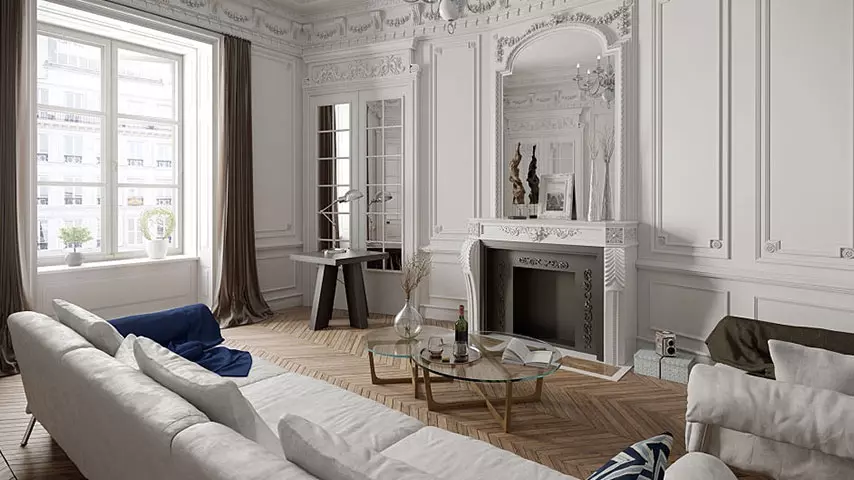Journey Through Victorian Interior Design
The Victorian era, spanning from the 1830s to the 1900s, was marked by innovation and creativity. As mass production and global communication took center stage, interior design evolved from a hobby for the wealthy to an integral part of everyday life. The ornate and elaborate decor of the Victorian era continues to inspire modern design ideas today.
Unveiling the History of Victorian Interior Design
A deeper understanding of the cultural and technological transformations during the Victorian era sheds light on the development of interior design. The industrial age played a significant role, as factories made furniture, art, and fabric easily and affordably accessible to the common person. This newfound accessibility resulted in the characteristic "busy" look of Victorian design. People embraced the opportunity to adorn their homes with furniture, art, and decorative items to reflect their personal style and showcase their newfound wealth.
Technological advancements in painting and dying also left a profound impact on Victorian design. Aniline dyes revolutionized the color palette, bringing vibrant hues like deep purples and glowing yellows into homes. These colors, combined with new printing and weaving techniques, found their way into wallpapers, curtains, and upholstery, creating cheerful and colorful living spaces for Victorian individuals.
Globalization and improved communication further shaped Victorian design. Published works like The Ladies Home Journal popularized the concept of design trends, with different decor styles being "in" or "out" each season. Motifs from cultures such as Egypt, Greece, and Asia gained popularity, and individuals started showcasing their personal style through distinctive interior design movements like Arts and Crafts and the Aesthetic movement.
Embracing the Characteristics of Victorian Decor
 Image: Victorian furniture designs in a house
Image: Victorian furniture designs in a house
Victorian homes were a reflection of trendiness and individualism, resulting in a diverse array of designs. However, certain key features consistently emerge in Victorian decor. Let's take a look at some of the defining characteristics:
Colors
Authentic Victorian design begins with a carefully chosen color palette. Dark, jewel tones like burgundy, emerald green, navy blue, and deep brown were popular during the earlier part of the era, camouflaging the smoke and ash prevalent in homes heated by coal fires. As cleaner gas lighting became available, brighter colors and pastels gained favor. While muted colors are often associated with Victorian palettes, brighter shades can also work when paired with Victorian-style furniture and decor.
Furniture
Victorian furniture exuded excess ornamentation. Gilt, mother of pearl, and cloisonne insets added color and interest to pieces, which were often intricately carved. No single dominant style prevailed, with some embracing European rococo furniture's delicate lines, while others favored Arts and Crafts designs, paying homage to Tudor era furniture with bulky and geometric shapes.
Architectural Features
Architectural features played a significant role in Victorian design, adding a touch of grandeur to homes. Elaborate crown moldings, built-in bookcases, decorative wainscoting paneling, stained glass, and wrought ironwork were common sights. Wood, a popular material, tied together the various decorative elements.
Flooring and Wall Materials
Wall decoration took center stage in Victorian interior design. Elaborate floral, leaf, and vine patterns adorned wallpapers, while faux finishes such as marble or wood-grained effects were achieved through painting techniques. Parquet wood flooring, often covered with woven rugs, added visual interest and warmth. In the mid-1800s, tile became popular, with repeating geometric designs at the center surrounded by a border.
Decor
Finishing touches played a crucial role in Victorian homes. Decorative objects adorned every surface, from furniture to fireplace mantles. Window drapes exuded elegance, delicately embroidered cushions adorned couches, and doilies and vases found their place on flat surfaces. Victorians had a penchant for greenery, with potted plants like palms and ferns adding a touch of nature. Wall art, featuring portraits, landscape paintings, and carefully organized layouts of images, took center stage.
Infusing Modernity into Victorian Design
 Image: Victorian interior design with white as the color theme
Image: Victorian interior design with white as the color theme
Currently, Victorian design elements are experiencing a revival as people move away from the minimalist designs of the previous decade. Incorporating Victorian flair into your home while maintaining a modern and fresh look is achievable with these tips:
Mix Up Upholstery Styles
If you adore the curves and intricate carvings of Victorian furniture, consider opting for modern upholstery designs such as sleek stripes. This juxtaposition of old and new adds a contemporary touch. Alternatively, choose modern furniture with clean lines and upholster them in Victorian patterns like floral or damask for a unique blend of styles.
Experiment With Wallpaper
Wallpaper, a prominent interior design trend of 2020, draws inspiration directly from the Victorian era. Patterns by renowned Victorian designer William Morris are particularly popular. To achieve a contemporary feel, balance ornate wallpaper with minimalist fixtures and decor.
Add a Gallery Wall
Bringing the Victorian style of adorning walls with pictures into the modern era can create a captivating living room. Select art pieces wisely, blending older Victorian works with abstract art or quirky wall hangings for a fun and fresh look.
Incorporate Architectural Details
Architectural details contribute significantly to the character of Victorian design. Parquetry or patterned tiled floors, wainscoting, built-in shelving, and carved moldings provide a backdrop that complements newer furniture while embracing the essence of Victorian style.
Let Our Team Transform Your Home
At Ron Nathan Interiors, we are a team of professionals dedicated to helping you achieve the home of your dreams. Whether you are a busy professional or simply lack the time to improve your living space, we are here to assist you. Take your home to the next level by contacting us through our website or by calling 201-666-8185. Let us help you create a perfect blend of Victorian elegance and modernity in your home.












